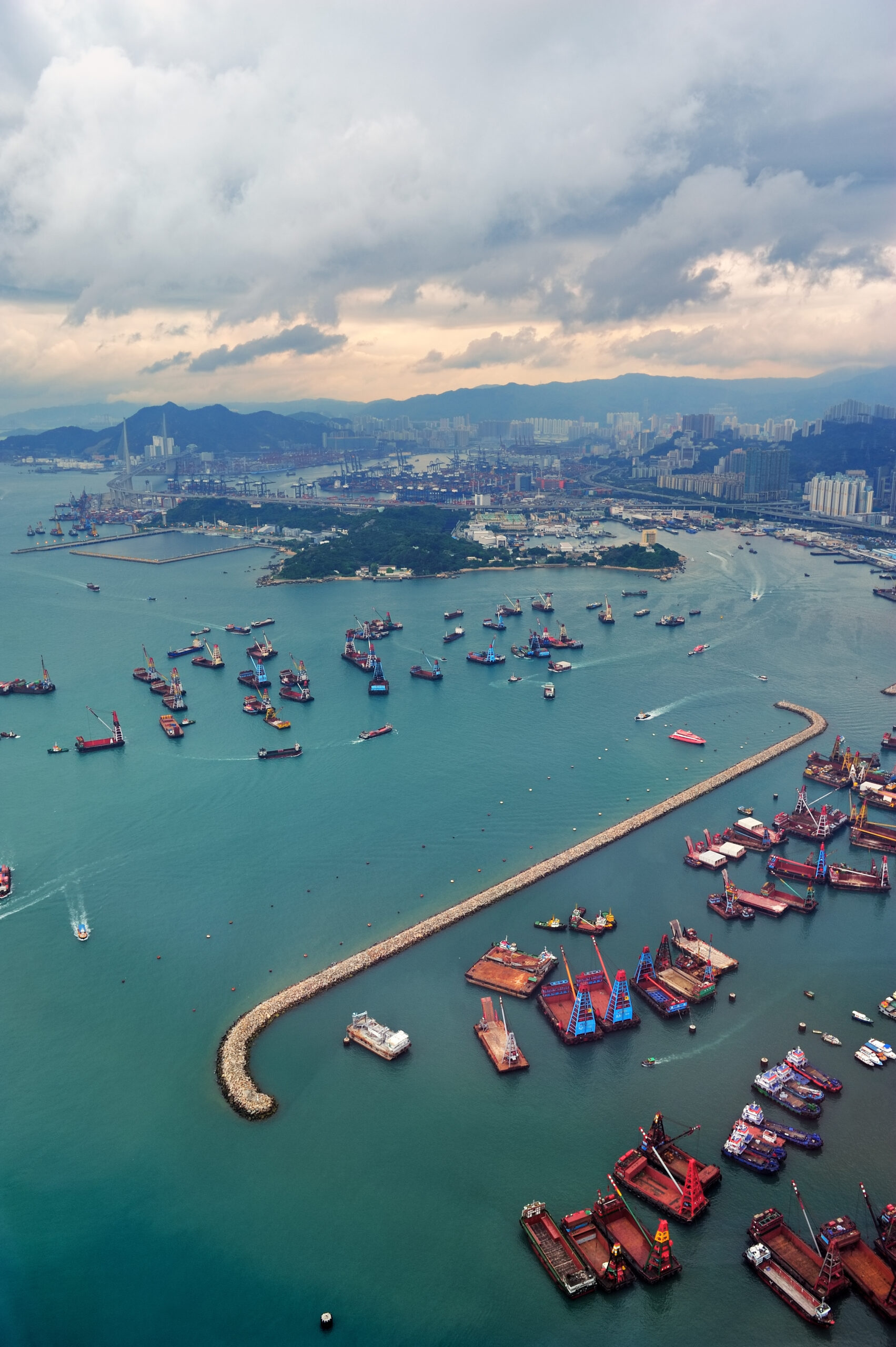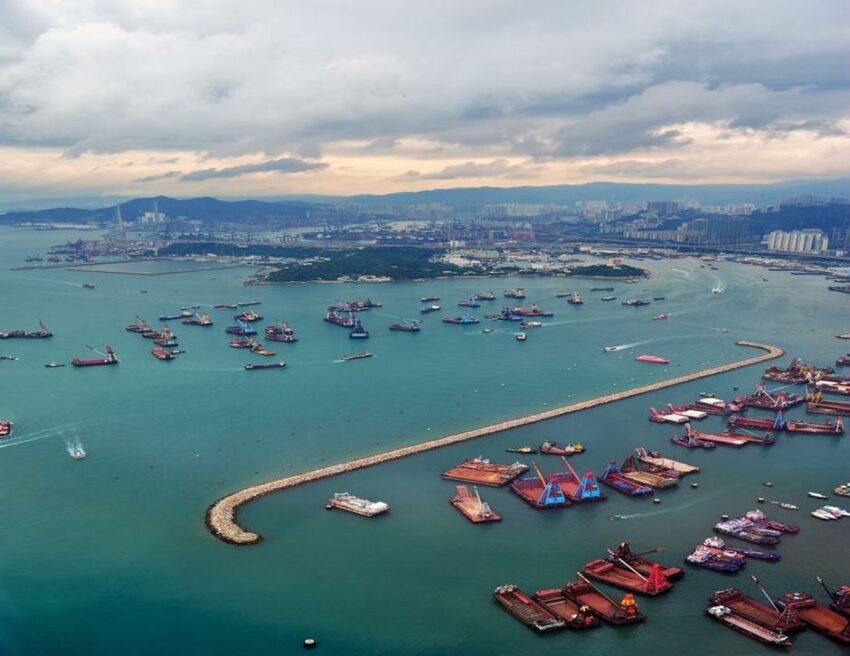The ocean freight sector is responsible for around 90% of the net global trade according to the International Maritime organization. The container shipping industry consists of several sea routes some of which are more important because of their location and commercial requirements commanding the inflow of container ships. The carriers rely on shipping routes that are being used for centuries and this in turn leads to considerable traffic at specific chokepoints all over the world.
Additionally, this has a significant impact on tariffs and freight rates. Thousands of vessels of all sizes ply these routes on a daily basis moving all kinds of commodities to/from every corner of the globe. In this article, we are going to talk about some of the busiest shipping routes and their significance for the container shipping industry.

The most used shipping routes in 2022
To start with, the world’s most important shipping routes are usually determined by the ports they connect. Larger ports that are more connected with the land routes tend to receive more traffic. Therefore, the shipping routes that connect those ports are the ones that attract more vessels. Moreover, the demand for commodities also has a role to play in determining the usability of the shipping routes. High demand for goods in a specific area eventually opens up a new route leading to the major ports in that zone that can meet the growing demand.
Not every place has the same amount of water required for ships to sail smoothly. The depth of the water is also an important determining factor since most large ships need a considerable depth of water to move smoothly. Let us now take a quick dive into some of the busiest shipping routes in the world.
The Dover Strait
The Dover Strait in the English Channel is the world’s busiest shipping route both in terms of the number of ships as well as the sheer volume of cargo that passes through it on a single day. Although the Dover Straight is the narrowest stretch on the English Channel, it still commands the position of one of the most important shipping routes that offer access to almost the entire Northern Europe. It allows vessels to access the busiest ports of the UK and at the same time forms the gateway to other important European ports such as the ports of Hamburg, Antwerp, Rotterdam, and Amsterdam. Simply put, a large number of cargo flow that happens within European cities passes through this route.
On average 500 ships cross this 350-mile-long stretch on a daily basis which firmly establishes its position as the most critical shipping route in the European container shipping network. Cargo ships carrying commodities of all kinds from grain, to oil to machinery cross this channel. Apart from connecting England and France, it also connects to the North Sea and the Atlantic Ocean.
The Strait of Malacca
The Malacca Strait connecting Malaysia, Singapore, and Indonesia is a crucial shipping route to/from Asia that has been in use since ancient times. Presently, the world’s second-busiest sea route, the Malacca Strait forms a major transit route that is fueling the demand for essential goods in the fast-developing regions in Asia. Moreover, being the shortest route between the Indian Ocean and the Pacific Ocean, it connects the largest economic hubs in the continent including China, India, Malaysia, Phillippines, Indonesia, Japan, Taiwan, Thailand, South Korea, and Singapore. Around 94,000 ships pass through this strait every year. More importantly, it forms one of the most important oil shipping routes carrying oil from the suppliers in the Persian Gulf to the markets in Asia.
The Suez Canal
The importance of the Suez Canal was brought into prominence once again in 2021 when the canal was accidentally blocked by the container ship Even Given causing a massive headache for the global transportation and logistics sector. Data published by Lloyd’s List has demonstrated that the blockage was impeding an estimated $9.6 billion of trade every day. This clearly demonstrates the importance of this canal in the ocean freight sector. This man-made canal provides the shortest sea link for container vessels between Asia and Europe.
The canal cuts the transit time between the Atlantic and the Indian Ocean from 24 hours to just 16 hours. Over 12% of the net annual global trade passes through this canal. Every day around 8% of crude oil (roughly one million barrels) passes through the Suez Canal. Nevertheless, the Suez Canal is very narrow and therefore cannot handle two-way traffic. This generally leads to considerable wait time for the ships, especially during the peak season.
The Panama Canal
Since its inauguration back in 1914, the Panama Canal has come up as one of the primary maritime canals of the globe serving over 144 routes to more than 160 countries. On average around 14,000 transits are made through the canal every year. The Panama Canal is an engineering marvel that is of vital importance to the global container shipping industry. Additionally, the remodelling of this maritime route in 2016 has been allowing larger container ships to ply the waters thereby increasing the flow of vessels. It allows the passage of ships with beams measuring 32 feet, specialized ships, and even warships.
This canal allows ships crossing from the Pacific to the Atlantic Ocean and vice versa to save around 15.000 Km. Moreover, ships moving between the East and West Coast of the Americas get to save 6,500 km. The total time that ships can save by using this canal is close to 22 days. It takes just 8 to 10 hours for ships to cross the Panama Canal.
Strait of Hormuz
The Strait of Hormuz which lies between Oman and Iran in the Persian Gulf is important not because of the number of vessels that cross it but because of the cargo that passes through it. Nearly 1/3 of the global oil supply passes through this shipping route which offers access to the Arabian Sea from the Persian Gulf. The slightest disruption in this shipping lane could result in oil shortages all over the world and as a result control over this area is highly contested by global powers.
Bosporus Strait
The Bosporus Strait cutting through Istanbul is a highly important shipping late that allows countries like Bulgaria, Ukraine, and Romania to access the Mediterranean Sea. Simply put, the Bosporus Strait allows these countries to get maritime access to the rest of the world.


